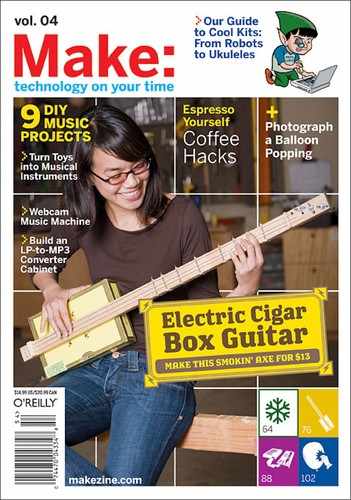TEA LEAVES
Wabi-Sabi
By Dale Dougherty
The Japanese have a deep appreciation for things humble and handmade.
![]() Do you have a favorite cup or pen or T-shirt? Why do you like it so much? I have a favorite coffee mug that’s at least 30 years old. It’s a ceramic mug with a few nicks in the handle and it bears the call letters of a public radio station, which sent it to me as part of a membership drive. I cannot explain why I like to use that particular mug first thing in the morning. To be honest, I never really thought about it until I returned from a trip to Japan earlier this year.
Do you have a favorite cup or pen or T-shirt? Why do you like it so much? I have a favorite coffee mug that’s at least 30 years old. It’s a ceramic mug with a few nicks in the handle and it bears the call letters of a public radio station, which sent it to me as part of a membership drive. I cannot explain why I like to use that particular mug first thing in the morning. To be honest, I never really thought about it until I returned from a trip to Japan earlier this year.
On my trip, I picked up a small book called Wabi-Sabi for Artists, Designers, Poets and Philosophers, written and published by a San Franciscan, Leonard Koren. He defines Wabi-Sabi as “the Zen of things.” Koren writes that Wabi-Sabi “is a beauty of things imperfect, impermanent, and incomplete. It is a beauty of things modest and humble. It is a beauty of things unconventional.” Originally, Wabi referred to “the misery of living alone in nature” and Sabi meant “lean” or “withered.” Over time, Wabi-Sabi came to mean an appreciation of the simple things in life. It seems akin to the way the word “organic” is now used.
In Japanese culture, Wabi-Sabi is wrapped in the mystery and ritual of the tea ceremony. The ceremony traditionally takes place in an outbuilding that is by no means elaborate; it’s more of a shed or a shack. The ceramic bowls used to serve tea have been uniquely created for this use and they are often passed down from one generation to the next. They are rough-hewn, not polished. The tea ceremony, like a lot of what you see in Japan, is about taking something that we do regularly and making it into an art form, a deeply considered experience. It’s the difference between eating fast food on the run and enjoying a satisfying meal in the company of friends or family.
Wabi-Sabi defines an aesthetic sense of an object, apart from its function. It’s a way of understanding why we are attracted to some things, what they mean to us, and how they make us feel. One insight of Wabi-Sabi is that objects gain value by being used. “They record the sun, wind, rain, heat, cold in a language of discoloration, rust, tarnish, stain, warping, shrinking, shriveling, and cracking. Their nicks, chips, bruises, scars, dents, peeling, and other forms of attrition are a testament to histories of use and misuse ... They still possess an undiminished poise and strength of character.” In Volume 02 of MAKE (see page 50), Joe Grand showed us how to put a new computer inside the well-worn case of an Atari console. I must admit that I wondered why someone would really want to go to all that trouble. Now, Wabi-Sabi helps me understand why Joe treasures his old Atari system.
Bob Dylan, in his book Chronicles, Volume One, says that when he was asked early in his career what kind of music he played, he answered, “folk music.” When he was then asked to describe folk music, he answered that “it was handed-down songs.” He started out learning this music and only later did he decide to make his own kind of music.
“One insight of Wabi-Sabi is that objects gain value by being used.”
Wabi-Sabi challenges conventional notions of beauty — that what is new is better, that mass-produced products are perfect. In fact, our experience is exactly opposite. Nothing is perfect. Nor are we. Large billboards in American cities this past summer featured large American women instead of excessively slender supermodels, showing that beauty comes in all shapes and sizes. Koren writes, “Wabi-Sabi appeared the perfect antidote to the pervasively slick, saccharine corporate style of beauty that I felt was desensitizing American society.”
Wabi-Sabi helps us identify something that is truly authentic, based on valuing our own experience. When something becomes your favorite, you don’t want to replace it with something new. The things we make are more authentic than the things we buy. Our own knowledge and experience are reflected in what we have made. As Finnish crafter Ulla-Maaria Mutanen writes in the Manifesto that appears in this issue (see page 7): “If you make something yourself, you see part of yourself in that object. This is not possible in purchased products.” Making something is a creative ritual, like the tea ceremony. We follow a set of steps that have been handed down to us, but what we end up with is all our own.
Dale Dougherty is editor and publisher of MAKE.

